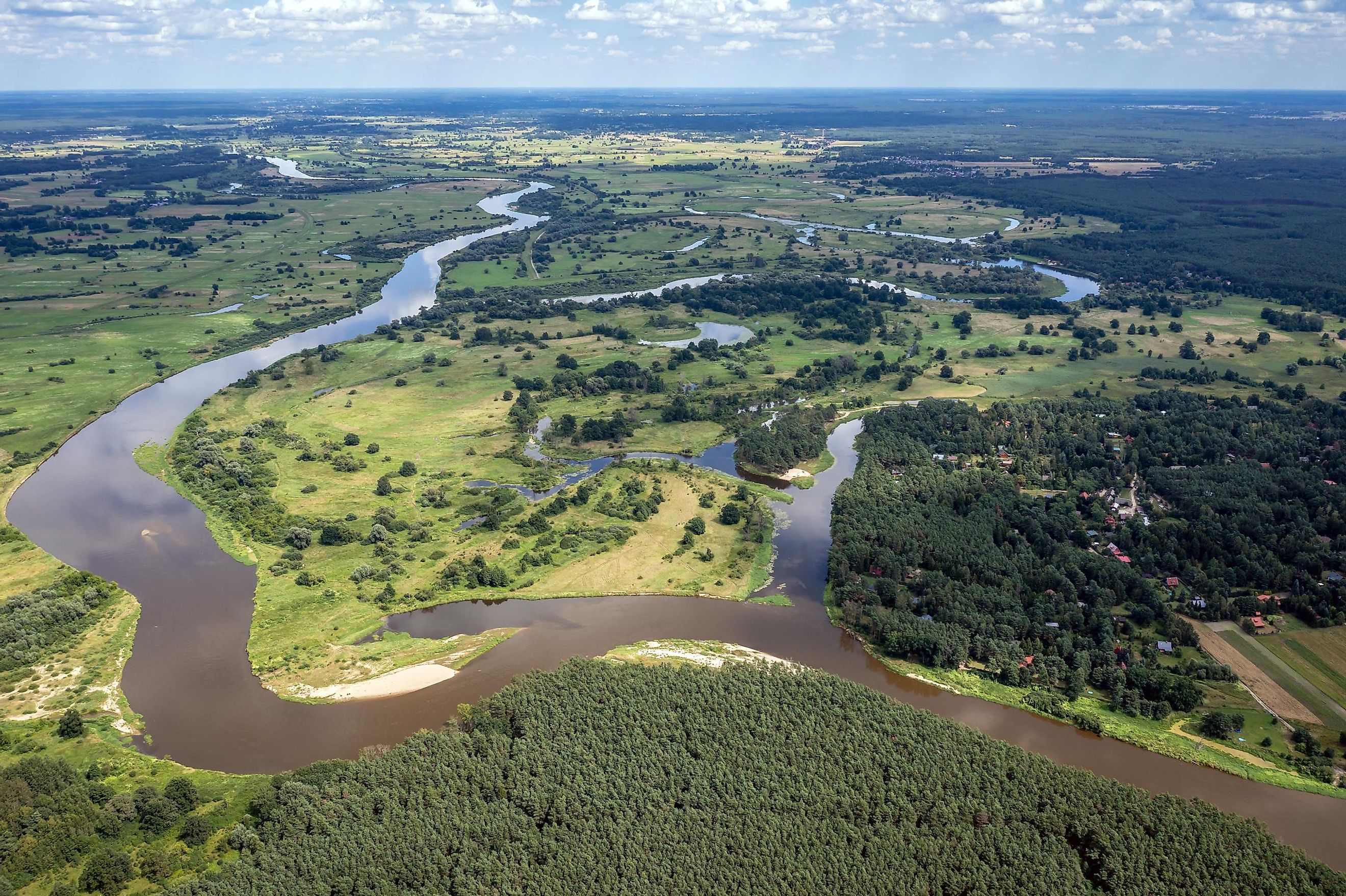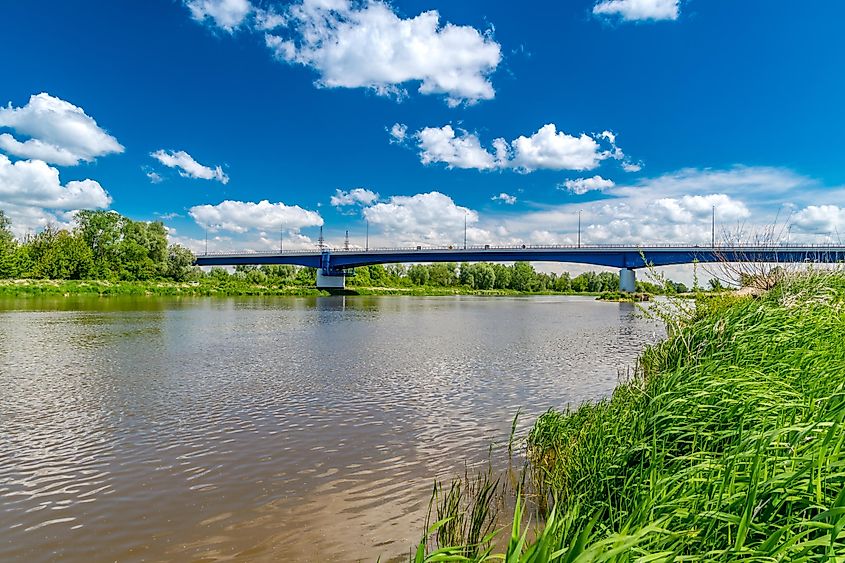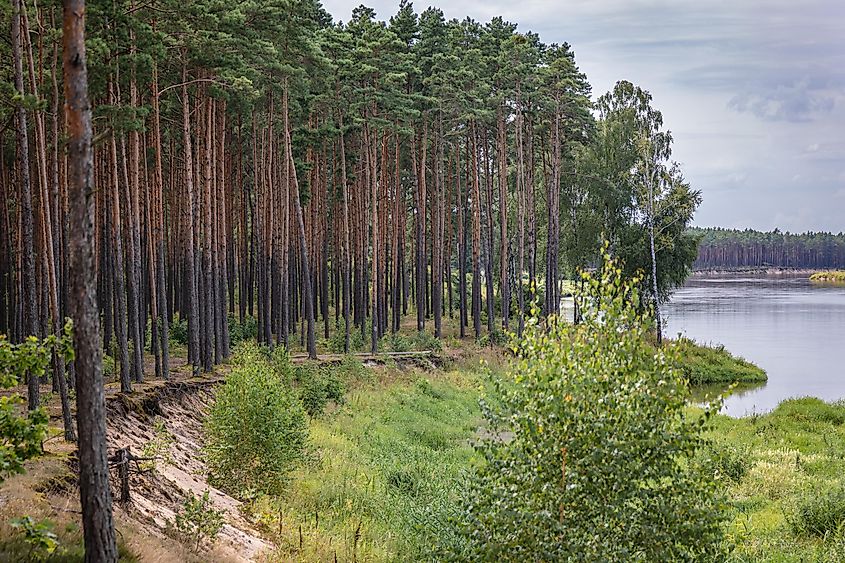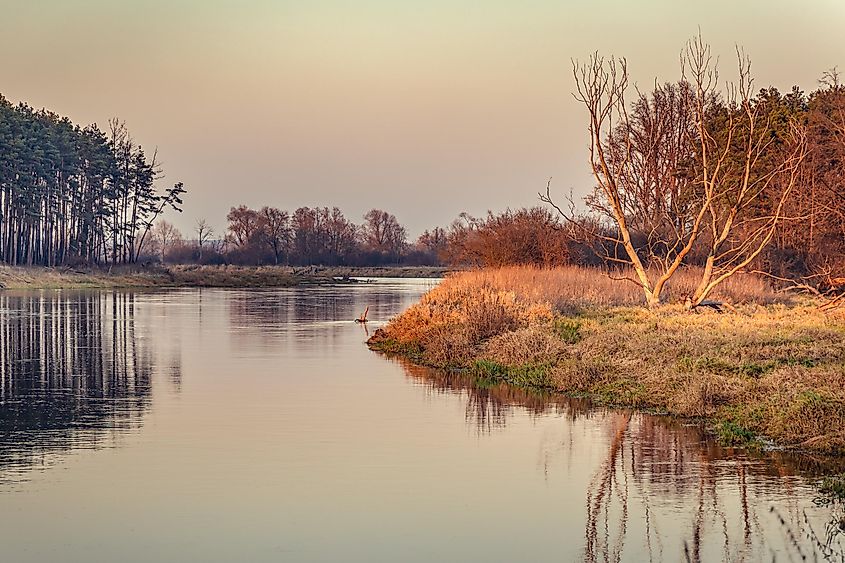
Bug River
The Bug River, also known as the Western Bug (in Ukrainian, Zakhidnyy Buh), flows 516 miles through Ukraine, Poland, and Belarus in Eastern Europe. (The Western Bug River does not connect to the Southern Bug River, which also originates in Ukraine but flows southward to the Black Sea.) The Western Bug is a tributary of the Narew River, which in turn is a tributary of the Vistula River, a major river that passes through Poland’s largest cities and empties into the Baltic Sea at Gdansk. The Western Bug River has been a regional commercial waterway for centuries, as well as an important international boundary between European empires and nations.
Source And Course Of The River

The Western Bug River begins its journey in western Ukraine’s Volyn-Podolsk Upland in Lviv Oblast (Province). The river winds primarily northward until it reaches Brest, Belarus, at which point it takes a more westerly course. The Western Bug empties into the Narew River to the northeast of Warsaw, Poland. The Narew, in turn, flows westward about 23 miles to empty into the Vistula River to the northwest of Warsaw. The Western Bug flows for a total of 516 miles and has a total drainage area of about 28,000 square miles. From its meeting point with the Narew River near Warsaw, the Western Bug is navigable for 195 miles upriver.
Ecology of the Western Bug

Compared to most of the major rivers of Europe, the Western Bug retains more of its natural character. The river generally maintains its natural channel for its entire length, without dams or altered shorelines. After emerging from its source in Ukraine’s Volyn-Podolsk Upland, the Western Bug passes primarily through level plains that are covered with a mix of forests and farmland. The river’s depth typically drops in the winter and rises in the summer, with occasional flooding. While generally free of industrial pollution, agricultural runoff pollution has become an increasing concern for the Western Bug River. This pollution poses a risk to the river’s population of mammals such as otters and beavers, as well as its dozens of fish and bird species.
History of the Western Bug
Since the end of World War Two in 1945, a 125-mile stretch of the Western Bug River has served as a border between Poland and Ukraine, as well as between Poland and Belarus. This same stretch of the Western Bug River was also part of the 1918 Curzon Line, which (although frequently disputed and adjusted) marked the boundary between Poland and the USSR after World War One. In centuries prior, the Western Bug frequently served as part of the boundary during the multiple partitions of Poland by surrounding powers Austria-Hungary and Russia. Because of this history, this border section of the Western Bug is still sometimes perceived as a natural dividing line between “East” and “West,” or, in religious terms, between Roman Catholic and Eastern Orthodox regions.
The Dnieper-Bug Canal

In Eastern Europe, river systems that empty into the Baltic Sea to the north (like the one of which the Western Bug is a part) flow in relatively close proximity to river systems that empty into the Black Sea in the south. So it should come as no surprise that many canals have been built over the centuries, some more successful than others. Most relevant to the Western Bug River is the 65-mile-long Dnieper-Bug Canal in Belarus, first dug in 1775. It connects the Pina River (which flows into the Black Sea via the Pripyat and Dnieper Rivers) to the Mukhavets River (which flows into the Baltic Sea via the Western Bug, Narew, and Vistula Rivers). The canal has fallen into disrepair and has been revived several times over the years, and Belarus is currently attempting another revival.
The Western Bug River isn’t particularly long or especially vital commercially, but for centuries it has played an important role as a border between empires and nations. It currently divides Poland from Ukraine and Belarus from Poland and is part of a river system that provides an outlet to the Baltic Sea. One benefit of the river’s contentious history as a border is that its banks have not been overly developed, allowing the Western Bug to retain much of its natural character.











